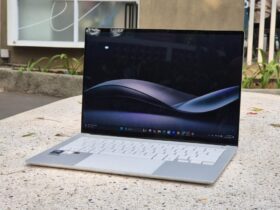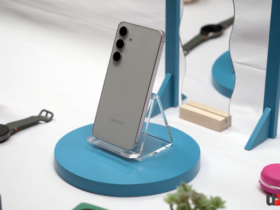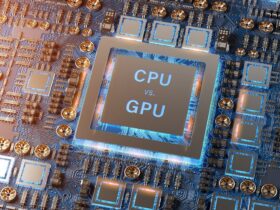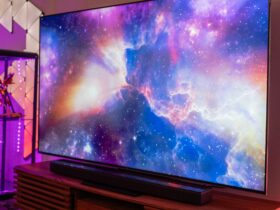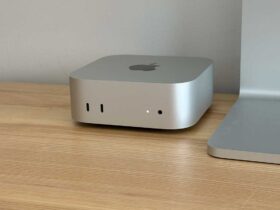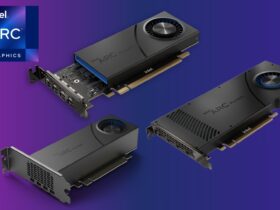Daftar Isi
In the realm of PC gaming, visual performance is paramount. FreeSync technology, developed by AMD, has emerged as a pivotal innovation in the gaming monitor market. It promises to eliminate screen tearing and stuttering, but is it truly a game-changer? This article delves into the mechanics of this new display technology, evaluates its benefits, and determines its value proposition.
Understanding FreeSync
The Problem: Screen Tearing and Stuttering
In the realm of gaming and digital graphics, screen tearing and stuttering represent two of the most common nuisances that disrupt the visual fluidity and immersion of video games. Screen tearing happens when a monitor’s refresh rate isn’t in sync with the GPU’s frame rate, causing multiple frames to be displayed at once on the screen. Stuttering occurs when the frame rate falls below the monitor’s refresh rate, leading to noticeable delays in motion. These issues can significantly detract from the gaming experience, making the pursuit of solutions a key focus in the tech community.
The Solution: Adaptive Sync Technology
Enter FreeSync, AMD’s innovative technology designed to tackle these problems head-on. This new display technology is an adaptive synchronization technology that allows a monitor to dynamically adjust its refresh rate to match the frame rate being output by a compatible AMD graphics card. This alignment eliminates the mismatch that causes screen tearing and stuttering, ensuring a smoother, more immersive visual experience for the user.
Power Consumption
FreeSync technology primarily aims to enhance the visual experience by synchronizing the display’s refresh rate with the GPU’s frame rate, which can help prevent screen tearing and stuttering during gaming and video playback1. While this feature itself is designed to improve gaming performance, it doesn’t inherently consume more battery life. In fact, it can potentially contribute to battery saving if it reduces the need for the GPU to render unnecessary frames.
However, the impact on battery life can vary depending on the specific implementation and usage. For instance, if this feature allows the display to operate at a lower refresh rate when high frame rates aren’t necessary, it could reduce power consumption. On the other hand, if you’re using features that demand more from the GPU, like Virtual Super Resolution, this could lead to increased battery usage.
FreeSync in Action
The mechanics of this new display technology hinge on the concept of variable refresh rate (VRR), which maintains a constant synchronization between the monitor’s refresh rate and the GPU’s frame rate within a specific range. This technology not only requires a FreeSync-compatible monitor but also an AMD graphics card. However, AMD has made strides in inclusivity by extending this feature support to select NVIDIA cards, broadening the technology’s compatibility and appeal.
The Benefits of FreeSync
The advantages of employing FreeSync technology extend far beyond the elimination of screen tearing and stuttering. For gamers, it transforms the visual dynamics of gameplay, particularly in fast-paced titles where frame rates are prone to fluctuate rapidly. FreeSync ensures that each frame is rendered and displayed exactly as intended, significantly enhancing visual fidelity and the overall gaming experience.
Read More: Disney’s Investment in Epic Games: A New Era of Collaboration
FreeSync vs. G-Sync
When comparing FreeSync to its main competitor, NVIDIA’s G-Sync, several distinctions emerge. G-Sync similarly aims to provide a fluid gaming experience by eliminating screen tearing and stuttering. However, it requires proprietary hardware, which often translates to a higher cost for the end-user. FreeSync’s advantage lies in its open-standard approach, making it a more cost-effective solution that is supported by a wider range of monitors.
Is FreeSync Worth It?
The value of FreeSync technology can be viewed through different lenses depending on the user. For gamers, the investment in FreeSync-compatible hardware is a small price to pay for the substantial improvements in gameplay quality and visual performance it delivers. On the other hand, while non-gamers may not perceive as dramatic a benefit, FreeSync can still enhance the smoothness and clarity of video playback and general screen interaction, making it a valuable feature for anyone seeking an optimized visual experience.
Conclusion
FreeSync represents a significant advancement in display technology, offering a cost-effective solution to enhance gaming and general use. Its value is most appreciated by those who demand fluidity and precision in their visual experiences. As the technology becomes more widespread, its adoption is likely to increase, further solidifying its worth in both gaming and everyday computing scenarios.





